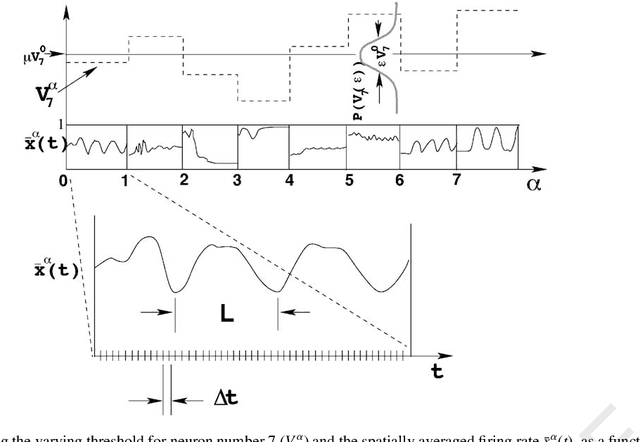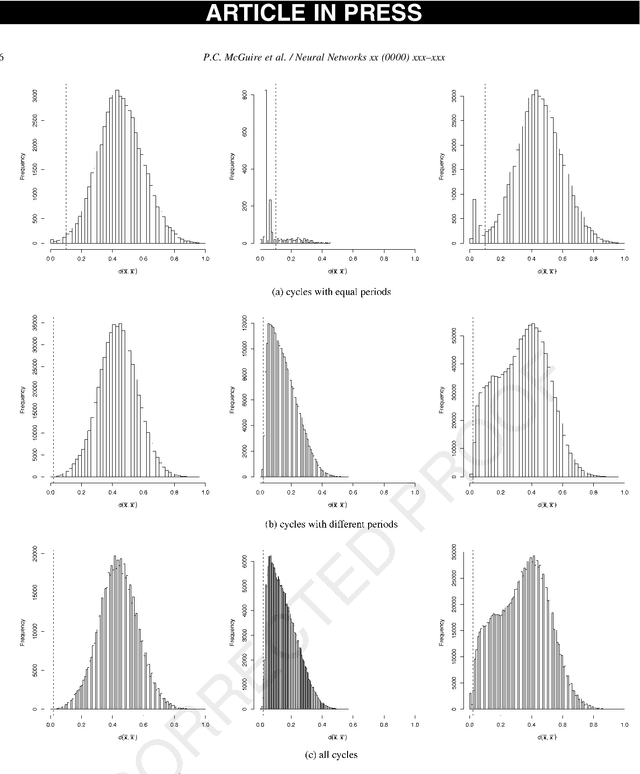Henrik Bohr
Threshold Disorder as a Source of Diverse and Complex Behavior in Random Nets
Feb 12, 2002



Abstract:We study the diversity of complex spatio-temporal patterns in the behavior of random synchronous asymmetric neural networks (RSANNs). Special attention is given to the impact of disordered threshold values on limit-cycle diversity and limit-cycle complexity in RSANNs which have `normal' thresholds by default. Surprisingly, RSANNs exhibit only a small repertoire of rather complex limit-cycle patterns when all parameters are fixed. This repertoire of complex patterns is also rather stable with respect to small parameter changes. These two unexpected results may generalize to the study of other complex systems. In order to reach beyond this seemingly-disabling `stable and small' aspect of the limit-cycle repertoire of RSANNs, we have found that if an RSANN has threshold disorder above a critical level, then there is a rapid increase of the size of the repertoire of patterns. The repertoire size initially follows a power-law function of the magnitude of the threshold disorder. As the disorder increases further, the limit-cycle patterns themselves become simpler until at a second critical level most of the limit cycles become simple fixed points. Nonetheless, for moderate changes in the threshold parameters, RSANNs are found to display specific features of behavior desired for rapidly-responding processing systems: accessibility to a large set of complex patterns.
* 20 pages, 14 figures, submitted to Neural Networks
 Add to Chrome
Add to Chrome Add to Firefox
Add to Firefox Add to Edge
Add to Edge